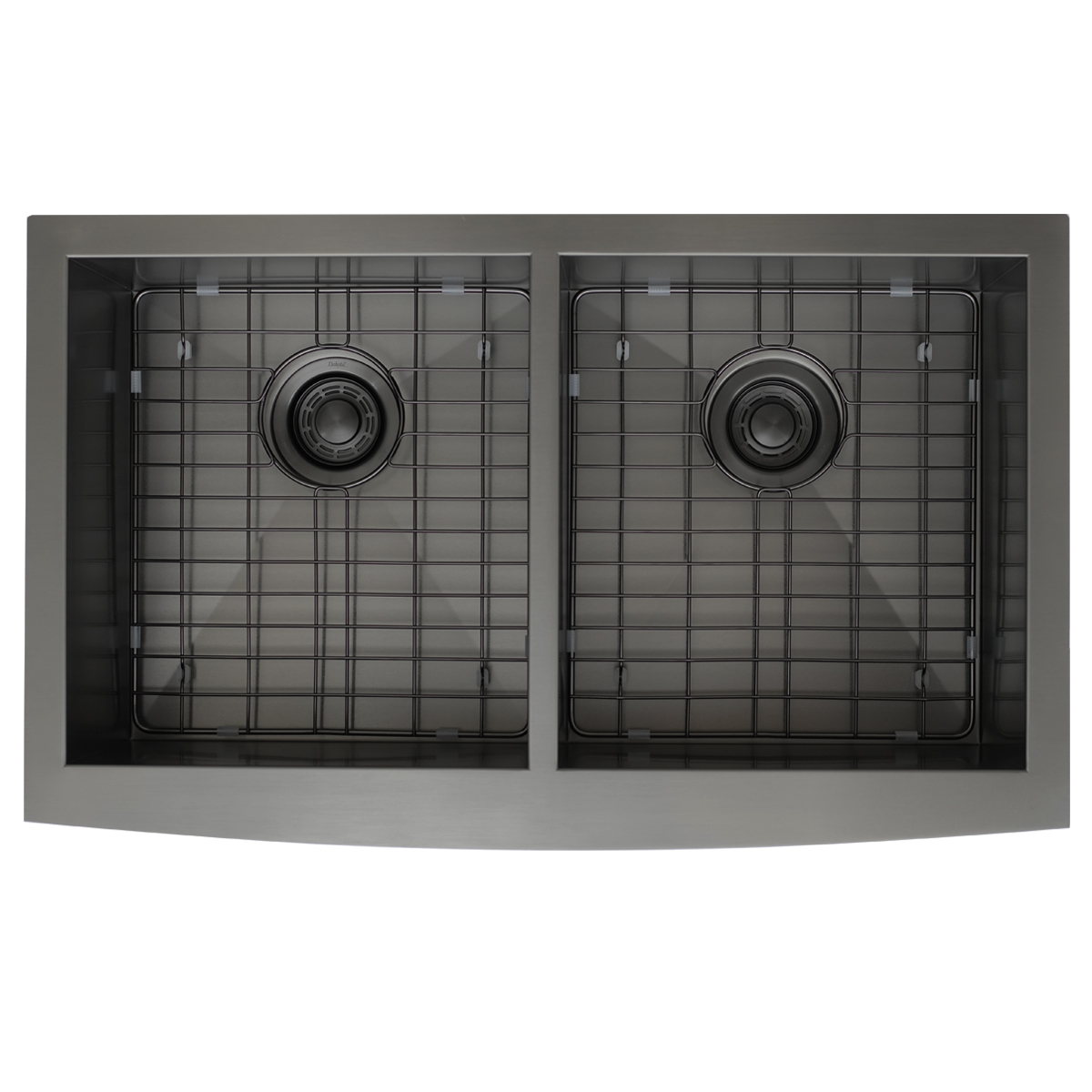STEP 1: Gently clean with liquid soap and dry.
Using warm water, liquid soap, and a sponge, gently clean the porcelain sink. Remove any food,soap, or toothpaste build-up from the surface. This will allow you to identify any stains or scuff marks require a deeper clean. Wash away all soapy residue, and dry with a dish towel.
STEP 2: Skip scrubbing, and remove discoloration using bleach on white porcelain and hydrogen peroxide on colored porcelain sinks.
Harsh scrubbing can damage porcelain, so your first line of attack should be the least abrasive. For white porcelain only, bleach can be used to remove stains; never use chlorine bleach in colored or vintage porcelain, as it can damage the finish. For both white and colored porcelain, liquid oxygen bleach (such as hydrogen peroxide) is a good alternative. It may take longer to work, but is less caustic and more environmentally friendly.
Pour the bleach product suited to your type of porcelain into a spray bottle. Cover your sink with a layer of paper towels. Spray bleach or oxygen bleach over the towels, allowing it to soak in thoroughly, and let sit for 30 minutes to an hour. Discard the bleachy paper towels, and rinse sink completely with clean water. If concerned about putting any kind of bleach on an antique porcelain sink, use white vinegar instead. Add undiluted white vinegar to a spray bottle and spray the sink, then use a non-abrasive sponge and circular motions to clean the porcelain. Rinse thoroughly with water. If the stains don’t lift completely and you decide to try oxygen bleach, remove all traces of vinegar first to avoid the harmful side effects of combining vinegar and bleach.
STEP 3: Tackle deeper stains with a mild abrasive.
If you don’t feel comfortable using bleach, try lifting stain with a gentle abrasive. There are many abrasive cleansers on the market, and not all are designed for porcelain. One safe and effective liquid is Bar Keepers Friend®. Squirt a small amount into the sink and gently scour the surface with a non-abrasive sponge. Its oxalic acid will lift stains, but be sure to use the product sparingly or risk discoloring and scratching your porcelain.
Lift metal stains with a little bit of acid or naval jelly.
Tackle silverware stains and orange/red rust separately, using these methods: Add a few drops of lemon juice or white vinegar directly to a metal stain. Do not mix acids! Let sit for several minutes, monitoring the color of the stain. Do not scrub. Remove with water. For rust stains, use Naval Jelly®. Apply a thin coat to the stained area, monitor carefully, and rinse as soon as you notice a change in the color of the stain. Naval Jelly® is primarily used to remove rust from metal, so exercise caution and rinse it quickly from porcelain as soon as the stain lifts.
Download Print Version: Dakota_Porcelain_Care_Instructions


